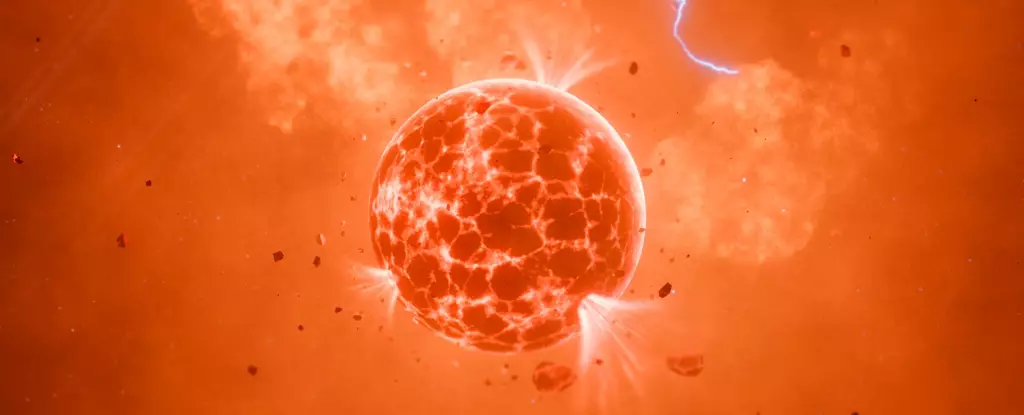In a groundbreaking discovery, astronomers have identified intriguing evidence of a moon swirling with volcanic activity around the exoplanet WASP-49b, located approximately 635 light-years from Earth. This revelation raises not only questions regarding the characteristics of this distant moon but also the broader implications for our understanding of celestial bodies in the universe. The critical clue comes in the form of a sodium-rich cloud that appears to be linked to volcanic processes, presenting a challenge to our established knowledge of planetary and moon formation.
Astrophysicist Apurva Oza from the California Institute of Technology emphasizes the significance of this discovery, noting that the sodium cloud’s behavior is inconsistent with what is expected from the atmosphere of a gas giant. The sodium is likely not a byproduct of WASP-49b itself but rather points toward the existence of an orbiting exomoon, potentially akin to Jupiter’s volcanic moon Io, which has sparked scientific curiosity about the interplay between moons and their host planets.
The Galactic Context of Moons
Moons are believed to contribute to the rich tapestry of the Milky Way, outnumbering planets in our own Solar System nearly 300 to eight. Yet, the quest for exomoons beyond our celestial neighborhood has proven to be a daunting challenge. While we have successfully identified thousands of exoplanets, the mere detection of some subsidiary moons remains elusive, often mistaken for other phenomena or background noise. This difficulty stems from the fact that we usually identify extreme and noticeable examples in the cosmos, which may not represent the overall population and complexity of such systems.
Though we’ve seen examples of volcanic activity on terrestrial exoplanets, the case of WASP-49b is distinct due to its classification as a gas giant, which traditionally is not associated with volcanic phenomena. The essential finding involves the unusual sodium cloud, initially observed in 2017, which prompted additional exploration into its source. The cloud’s fluctuating presence—appearing to pulse in and out of visibility—suggests an intricate relationship between the planet and its potential moon.
The quest for understanding the peculiar sodium cloud began with attempts to distinguish between planetary and potential exolunar origins. Oza and his research team employed the European Southern Observatory’s Very Large Telescope for their analysis, scrutinizing data for days to glean insights into the cosmic mechanics at play. What sets this sodium cloud apart from others observed in the universe is its erratic behavior. The cloud does not persistently envelop WASP-49b, leaving researchers questioning its origin—whether it is a result of instability in the planet’s atmosphere or external influences from a nearby moon.
By using computer models to simulate the conditions of the system, researchers determined that the sodium cloud’s characteristics are most consistent with emissions from a continuously active volcanic moon rotating around WASP-49b. Such dynamic forces at play could be reminiscent of how Jupiter’s Io is influenced by gravitational interactions with its neighboring moons. This idea provides a deeper understanding of how tidal forces may shape not only the moons themselves but also contribute to their eventual fates.
Should the existence of a volcanic exomoon be confirmed, its fate raises poignant questions. The close proximity of this moon to its gas giant host implies that its orbit could experience significant disturbances over relatively short timescales. As tidal forces pull and push this moon, it stands at risk of eventual destruction, potentially spiraling into WASP-49b due to the gravitational tug-of-war. Oza’s somber prediction paints a vivid picture: should this moon persist, its ending may be cataclysmic, serving as yet another reminder of the often violent and transient nature of celestial mechanics.
As scientists continue to unravel the complexities surrounding WASP-49b and its possible exomoon, the implications could extend well beyond this individual system. Such findings invite us to rethink the very nature of moon formation, the diversity of planetary systems, and the potential for similar volcanic worlds scattered throughout the galaxy. The discovery not only enhances our understanding of exomoons but might also help illuminate the conditions necessary for life elsewhere in the cosmos.

